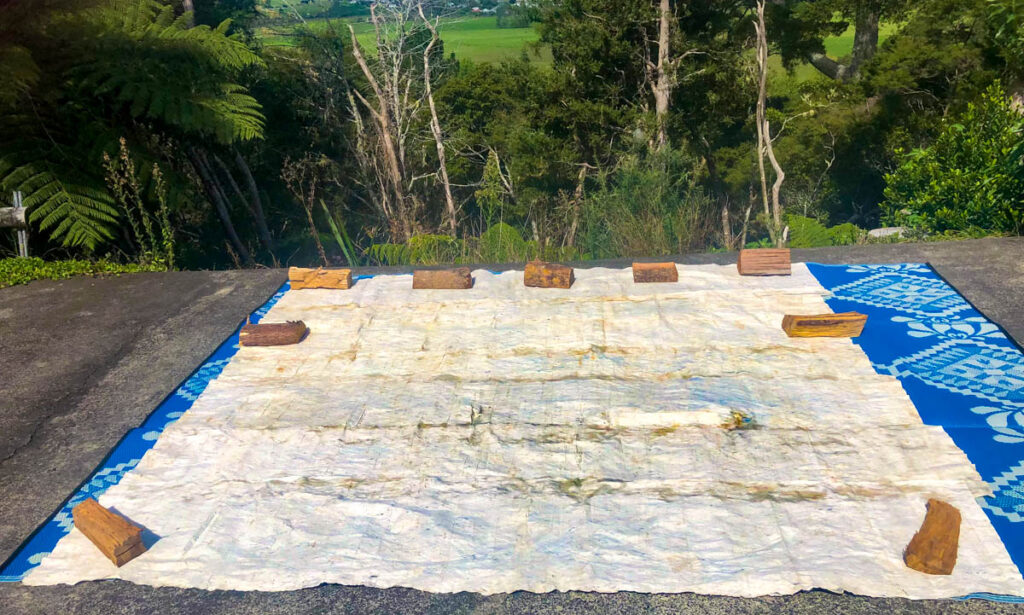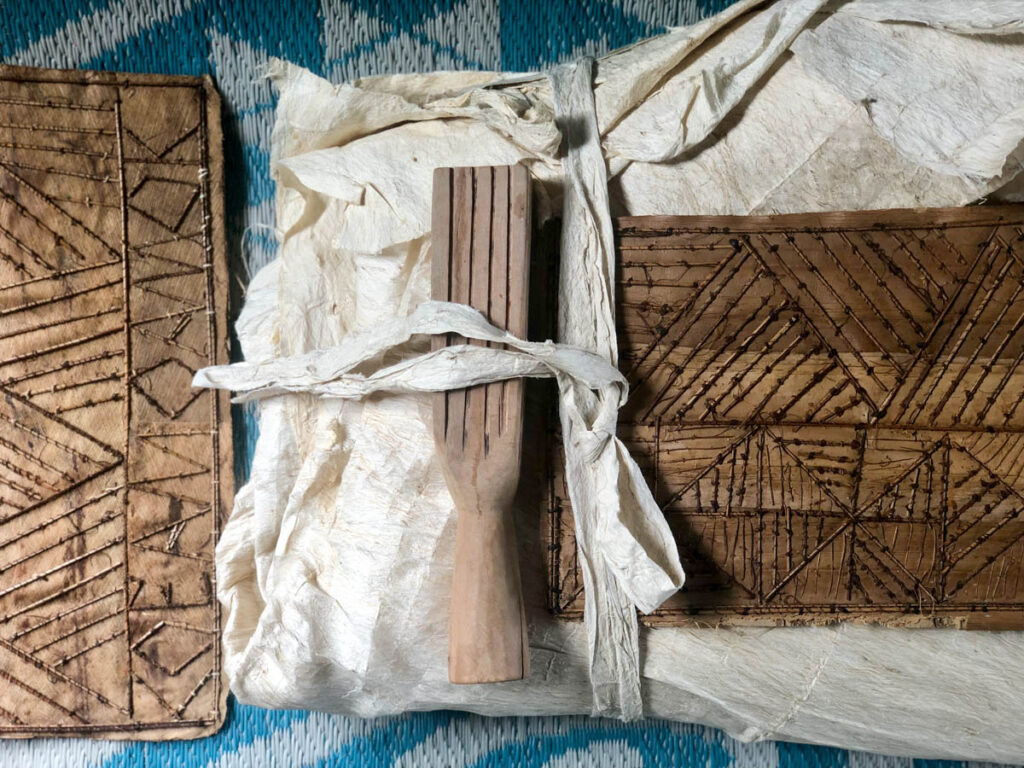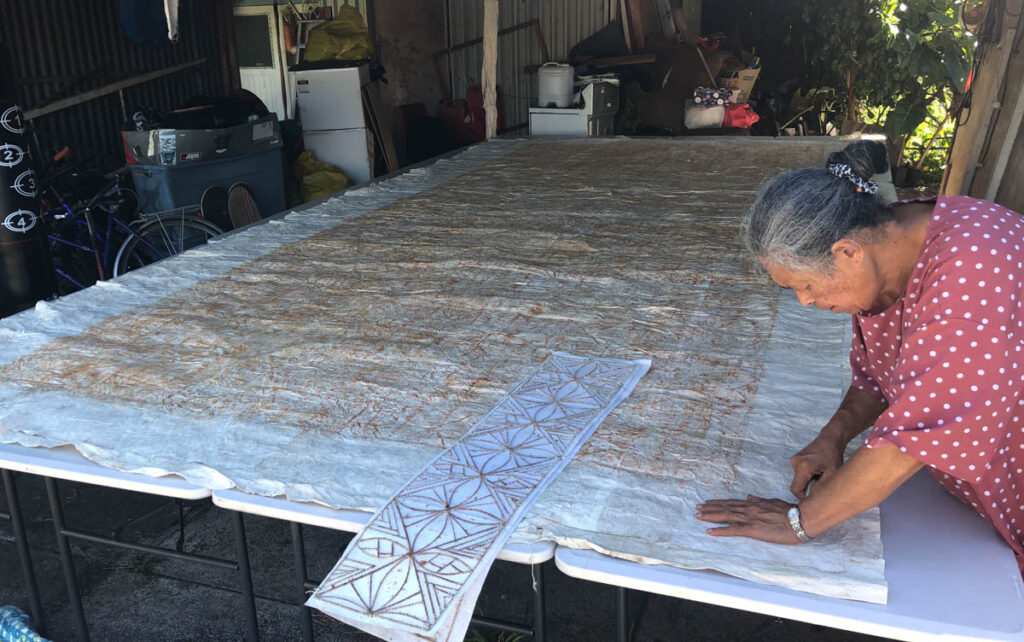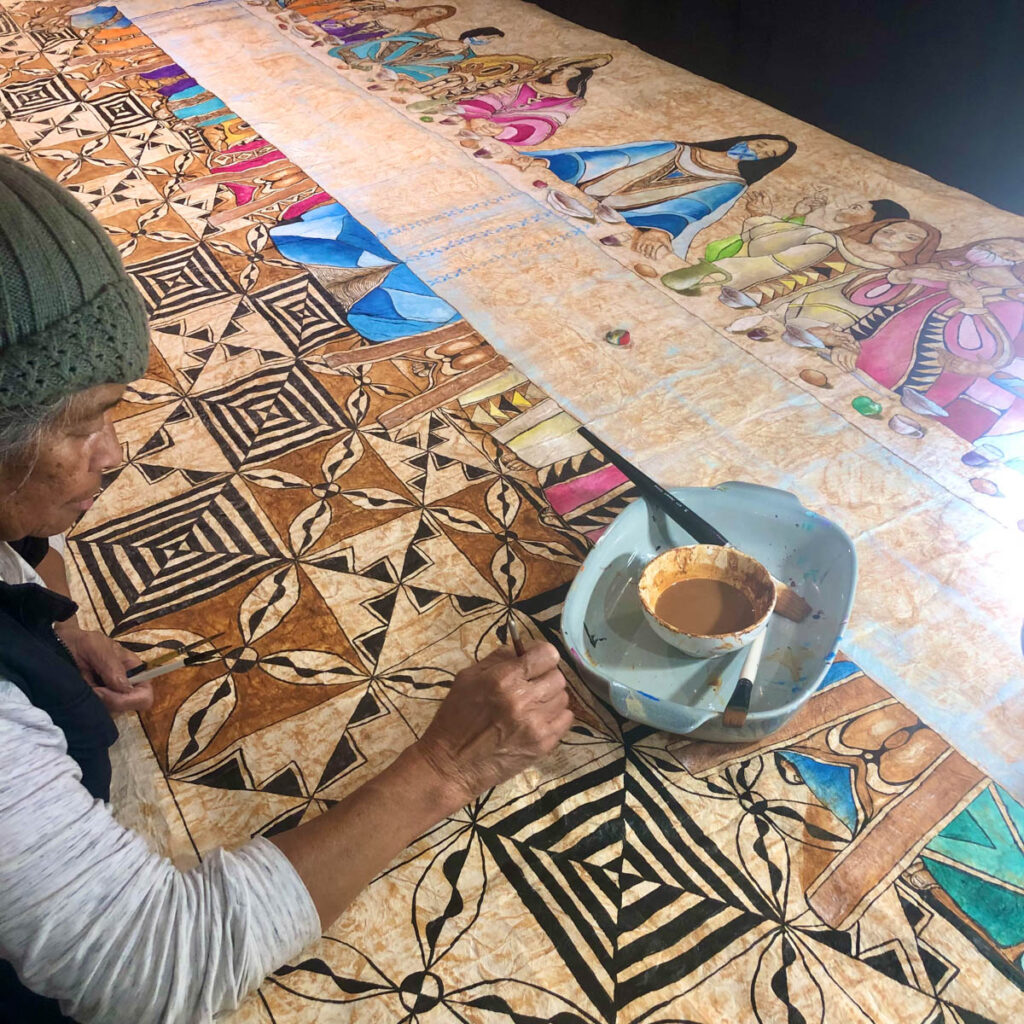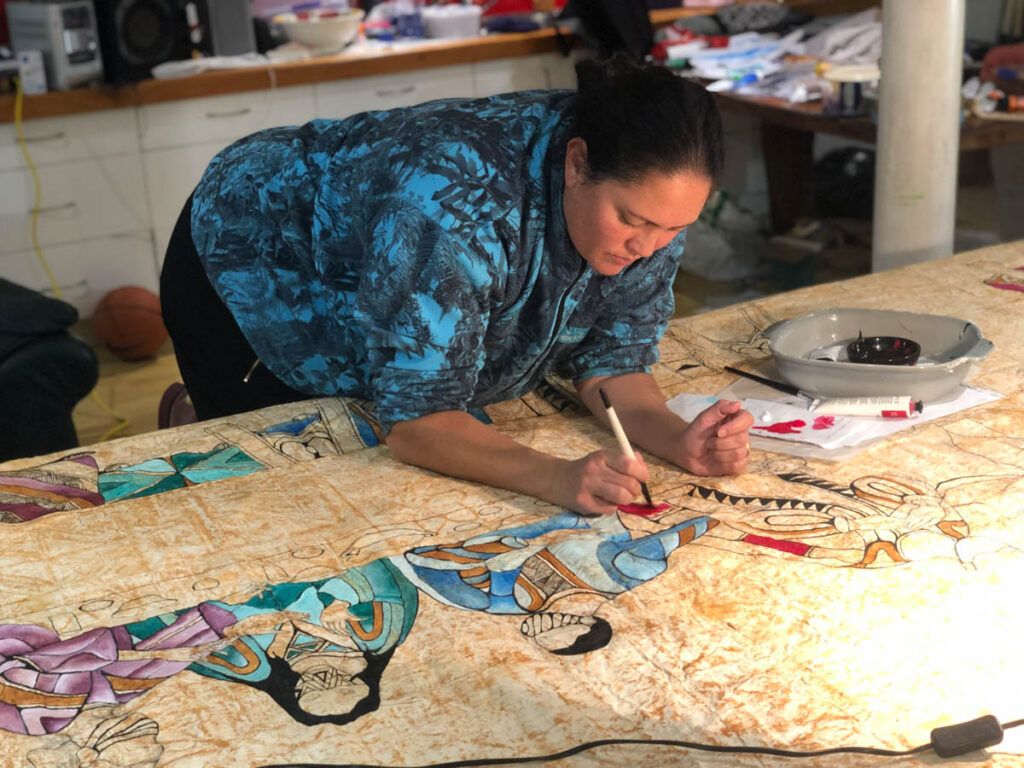
Sulieti Fieme’a Burrows and Tui Emma Gillies, The Last Kai, 2022, Falevai and Tongatapu beaten tapa cloth, Umea/Earth dye from Vava’u, mangrove root dye, black Indian ink, acrylic and watercolours, 500 x 250 cm
Our June laurel goes to an epic tapa recreation of da Vinci’s Last Supper painting. Tui Emma Gillies shares the journey of its creation.
The work measures approx 5 metres by 2.5 metres and is painted on two sheets of feta’aki (plain tapa cloth). It is called The Last Kai, and is currently showing in a group show called, Gift, at The Ashburton Art Gallery in the South Island of New Zealand until the 19th of June. It showcases our version of The Last Supper, with women included sitting around the table. It represents the current Covid times we are living in with masks being worn by some. We included women to show we are all equal and need fair representation. If The Last Supper was happening in this day and age, we’d hope to see a few more women sitting around the table.
The painting itself was a mammoth task. My mum, Sulieti Fieme’a Burrows used old kupesi stencils handed down from elders in Falevai for the background. The kupesi stencils are placed under the cloth, which is rubbed with brown umea dye made from red earth clay from Falevai. Then Sulieti concentrated on using traditional Tongan patterns for the borders and the flooring, while I focused on painting the supper itself in the glorious colours Polynesians often love to wear.
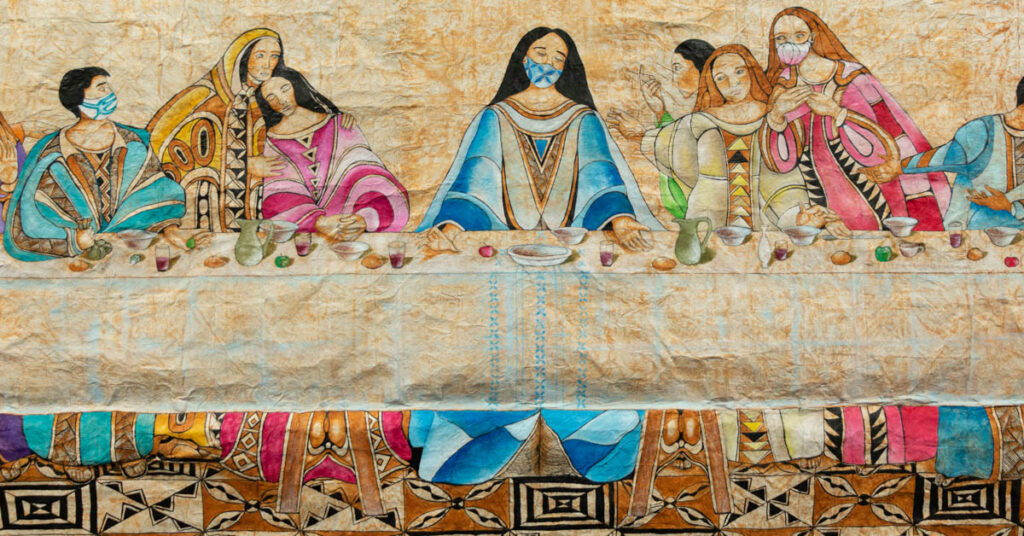
Sulieti Fieme’a Burrows and Tui Emma Gillies, The Last Kai, 2022, Falevai and Tongatapu beaten tapa cloth, Umea/Earth dye from Vava’u, mangrove root dye, black Indian ink, acrylic and watercolours, 500 x 250 cm (detail)
It was very common to see the prints of Leonardo Da Vinci’s famous work, The Last Supper in people’s homes and I grew up seeing it in my pacific relatives’ households. It is a work many Polynesians have a special affinity with. And that had a lot to do with our urge to do our own version on Tongan tapa cloth. The painting was a painstaking and labour-intensive endurance event as well as a creative firestorm that taught us both so much about our own chosen art practice.


